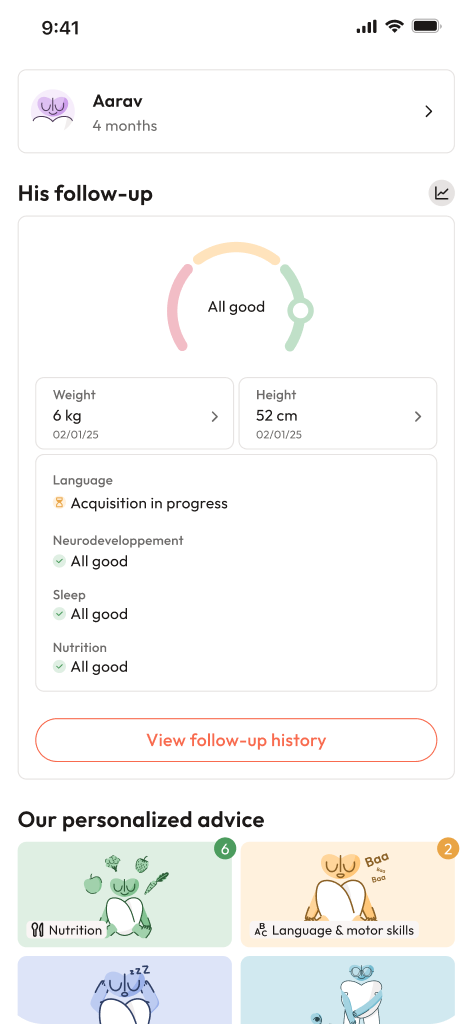Waiting for your little miracle’s arrival, questions start swirling in the mind—when will the baby show up, how can dates be tracked with all these cycles, ultrasounds, and appointments? Uncertainty looms, schedules need arranging (prenatal visits, leave planning, maybe even a family trip). All this brings us to a tool that’s both simple on the surface yet steeped in science and tradition: the pregnancy due date calculator. A name that might sound technical, but for parents begins a journey from those first flutters of hope to the moment when the tiny heartbeat finally echoes in the clinic.
Calculating when your baby is likely to make its grand entrance—it’s never an exact science. Still, using the right information can turn confusion into clarity, allowing for stress-free planning and confidence in your pregnancy journey. Here, each step is mapped out: how the pregnancy due date calculator operates, which input makes a difference, why accuracy matters so much, and what to expect week by week. Whether you’re working with specifics like IVF records or trying to recollect the last period, every pathway finds its answer.
How the pregnancy due date calculator works: Multiple methods, one goal
Curious how so many parents count on a pregnancy due date calculator? It’s all about matching your information to established formulas. A handful of primary methods paint the larger picture:
- LMP method: The most common—add 280 days (40 weeks) to the first day of your last menstrual period (LMP). This stems directly from Naegele’s rule, used since the early days of obstetrics.
- Cycle length adjustment: Not everybody ticks on a 28-day cycle. For those whose average cycle deviates, just shift the EDD by the difference. A longer cycle? Bump the due date up. Shorter? Bring it closer.
- Known conception date: Particularly relevant for those tracking ovulation or using fertility treatments—here, simply add 266 days (38 weeks) to that specific date.
- IVF or embryo transfer: Precision enters another realm. Day‑3 or Day‑5 embryos have their own calculations (263 or 261 days from the transfer date), accounting for the embryo’s “age” at transfer.
- Ultrasound dating: When cycles are uncertain or LMP feels sketchy, a first‑trimester ultrasound comes to the rescue. It measures the Crown–Rump Length (CRL), providing possibly the most accurate gestational estimate.
Tables, formulas, numbers—does it ever feel overwhelming? Pause. The pregnancy due date calculator does all the logic in seconds, surfacing a date and clarity you can trust. Each method has its place. If you’re working with sheaves of blood test results or are unsure about which date to use, remember: let science and your doctor help you choose.
From obstetric wheels to AI apps: Visualising the journey
There’s something poetic about seeing your pregnancy tracked on a digital screen or the revolving paper wheel your mother’s doctor may have used decades ago. Where ink once circled calendar dates, today’s calculators bring interactive visuals. Everything from week-by-week milestones to printable checklists lives in one scroll.
Old-school or digital—a question rarely with a single answer:
- Paper disks: Reliable, needing only a start date, they’re untouched by technology but handy anywhere.
- Digital apps and calculators: Here you find reminders for scans, week-by-week growth insights, options to include embryo age, or even adjust for time zones and date formats. Download, print, or share—a summary delivered in your language, aligned with your pregnancy.
A pregnancy due date calculator doesn’t just estimate a day; it sketches a timeline. Numbers become touchpoints: when to consider the first scan, expect fetal kicks, prepare for glucose screening, or simply celebrate the end of another trimester.
Step by step: Inputs, outputs and what makes dates shift
Personalisation matters. No two bodies sync exactly the same, and biology revels in subtle variations. Hence, the pregnancy due date calculator adapts, taking these real-life details:
Inputs:
- LMP’s first day (and not the last, a common mix-up that could shift every milestone)
- Average cycle length (find yours—most choose 28, but 21 or 34 are just as valid)
- Exact conception, ovulation, IUI, IVF transfer date (with embryo age if needed)
- Early ultrasound date and CRL reading (especially valuable if periods are irregular)
- Finer tweaks: luteal phase length, time zone, local date display preference
Outputs:
- EDD with the method used (marked as LMP, IVF, ultrasound, etc.)
- Gestational age—today, in weeks and days (for example, 14w2d)
- Days left until due date, or days overdue if you’ve crossed the line into overtime
- Trimester label (so you’re not left guessing where you stand)
- Important screening windows (NT/NIPT, anatomy scan, GDM, GBS)
- A printable, shareable summary for the workplace, clinic, or family group
What if the numbers just don’t fit? Ultrasound sees you at one gestational age, LMP another. Most clinicians will trust early ultrasound when conflict arises, precisely because it anchors the timeline with biological evidence—CRL measured to the nearest millimetre.
Naegele’s rule and why cycles aren’t always created equal
No need to dust off old math textbooks. The pregnancy due date calculator harnesses Naegele’s rule, standard across modern obstetrics:
- Calendar method: LMP + 1 year − 3 months + 7 days
- Day count: LMP + 280 days
Two paths, same destination, provided cycles are a clockwork 28 days. If yours stretches to 33, add five more days to the finish line. Shortened cycle? Retract as many days as the difference. A single misstep—using the last day of bleeding, confusing spotting or withdrawal bleeds, or relying on irregular cycles—could shuffle all appointments forward or back, sometimes by weeks.
Irregular cycles or uncertainty in dates? An ultrasound in the first trimester becomes the guiding star, often trumping even the most careful calendar tracking.
Ultrasound dating: A scan above the rest
The magic of ultrasound lies in its objectivity—a moment where what’s inside gets measured, not guessed. The first-trimester Crown–Rump Length (CRL) usually delivers an accuracy margin within 5–7 days, far sharper than estimates from later in pregnancy. As pregnancy progresses, individual growth, genetics, and even nutrition start influencing measurements, leaving more room for variation.
- First trimester: Difference of 5–7 days between LMP and ultrasound—expect a shift to the ultrasound date.
- Second trimester: 7–14 day leeway before switching EDD.
- Third trimester: Larger variances, reflecting less precise dating as the pregnancy matures.
Whenever dates are updated, all corresponding appointments—anatomy scan, GDM test, even birth preparation—are rescheduled to keep things medically sound.
IVF, ART and special rules for high‑precision pregnancies
Assisted conception, from IVF to ICSI and FET, adds extra precision—and a slightly different set of maths:
- Day-3 transfer: Transfer date + 263 days
- Day-5 transfer: Transfer date + 261 days
- Frozen transfer? Transfer date remains the anchor, only embryo age determines the count, not the thaw or retrieval.
A pregnancy due date calculator with IVF options is indispensable here. Forgetting embryo age, or misreading what “day 5” means, can misplace every milestone, so keep those clinic documents handy to double-check.
How many weeks? Mapping trimesters and real time pregnancy tracking
Here, the calculation finds a heartbeat:
- Today’s gestational age? 280 minus the days until your due date, divided into weeks and days.
- Trimester labels give context: from the tentative early weeks (0w0d to 13w6d), to the second trimester’s more regular routines, and finally the third—where baby’s debut draws near.
Signposts to expect (and discuss with your practitioner):
- 8 weeks: Dating and viability ultrasound; early blood work
- 12 weeks: First-trimester screening, possibly NT or NIPT
- 18–22 weeks: Anatomy scan—seeing that tiny nose or perfect feet
- 24–28 weeks: GDM screening, a test many find tedious but essential
- 36 weeks: Group B Strep screening, prepping you for labour realities
A pregnancy due date calculator can provide not just the “how many weeks,” but a roadmap. Downloadable, shareable, making those early-morning appointments a bit less stressful.
Week-by-week: What to expect as dates shift
Every week tells its story. Did you know that home pregnancy tests turn positive just 3–4 weeks post-conception? The timeline unfolds:
- First trimester (4–13 weeks): Scans, screenings, and the nervous excitement of hearing the first heartbeat
- Second trimester (14–27 weeks): Anatomy scan, beginning to feel movement, and regular check-ups
- Third trimester (28–40+ weeks): Vaccines, GBS testing, intensified monitoring, and birth-planning conversations
Printable summaries or week-by-week content keep everyone informed—partners, family, and even impatient grandparents.
How accurate is a pregnancy due date calculator? Limitations and changing plans
Nature has its quirks. Babies rarely arrive strictly on the EDD; they savour spontaneity, appearing anywhere from two weeks before to two weeks after the target. Medical categories help manage expectations:
- Preterm: under 37 weeks
- Early term: 37+0 to 38+6
- Full term: 39+0 to 40+6
- Late term and post-term: after 41 weeks
LMP errors, unreliable cycles, or unexpected bleeding create uncertainty—that’s when close coordination with your care provider, and timely ultrasounds, help keep everything on course. IVF data nearly always takes precedence, being the most exact, unless a meaningful ultrasound discrepancy is discovered.
Special cases: When calculators need backup
Life does not always follow regular patterns. Multiples? Expect an earlier delivery window, and more clinical monitoring. Unknown LMP? Early scan becomes the cornerstone. Bleeding episodes that confuse the timeline—here, the calculator is just a starting point, not the final word.
Heavy bleeding, severe pain, or alarming symptoms at any time? Set calculation aside and contact medical help immediately. Machines estimate dates; only a clinician can address urgent symptoms.
Responsible use: Best practices and privacy
- Enter the first day of last period (not the end, not a withdrawal bleed).
- Adjust cycle length for better accuracy.
- Double-check date formats; avoid day/month swaps (DD/MM vs MM/DD).
- Include embryo age for IVF/FET.
- Keep privacy in mind—exporting and sharing data should always be your choice.
Manual maths can trip even careful minds. Let the pregnancy due date calculator handle updates when a new ultrasound or clinical data shifts your course.
Key Takeaways
- The pregnancy due date calculator is a reliable friend, mixing science and the personal rhythm of your body to predict when you might meet your baby.
- Choose the method that suits your history—paper wheel, digital calculator, or direct clinic measurements.
- More accurate data brings more accurate results. Regularly update your due date as new clinical information comes in.
- Use summary printouts for visiting your clinician, share with employers, and keep important dates handy.
- For truly personalised tips, health questionnaires and support that adapts as your journey unfolds, download the application Heloa—because every pregnancy deserves guidance as unique as the baby on the way.
Questions Parents Ask
How do I work backwards from a due date to estimate conception?
To get an estimate, subtract 266 days from your EDD, as that gives the likely fertilisation date. If your EDD is based on LMP, another quick math: LMP + 14 days (the usual ovulation point with a standard 28-day cycle). But conception is a range, not a spot—sperm can survive a few days, the egg about 24 hours. For IVF, subtract 261 days for a Day-5 embryo. For more certainty, rely on early ultrasound or precise clinic records.
What date should I enter if I think bleeding was implantation rather than my period?
Unsure if it was implantation? It’s a common dilemma! Try both possibilities: plug the suspected period into the calculator, then run it again with your last confirmed period. See how results differ, and discuss that uncertainty during your next clinical visit. Still not sure? An early ultrasound offers the best clarity.
Can a calculator tell me the exact day I conceived?
For most, no; natural conception stays a best-guess scenario because of timing in the reproductive cycle. A “window” is more reasonable than a single day. IVF pregnancies, however, can be dated with precision thanks to clinic records. If medical accuracy is needed, ask about an early scan or reference treatment documents.

Further reading :









